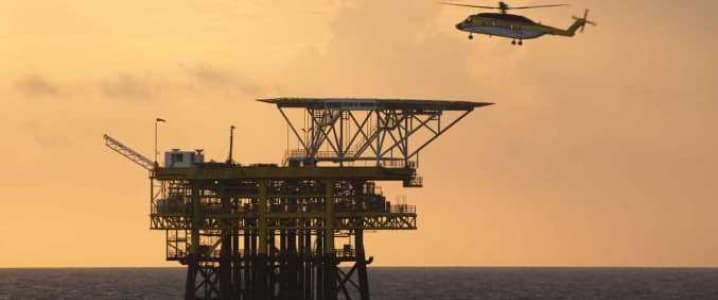U.S. markets are closed today in observation of Presidents Day, but crude prices are still trucking on higher in thin electronic trading. Fun and games have been deferred until later in the week, with the EIA inventory report pushed back until Thursday. As for today, hark, here are five things to consider in oil and energy markets:
1) The word on the street is that Asian refiners will receive full allocations of Saudi crude in March, as OPEC's kingpin chooses to keep its Asian customers well-supplied - at the expense of those in North America.
As our ClipperData illustrate below, Asia was the destination for 68 percent of Saudi's crude exports last year, while North America accounted for some 16.5 percent of volumes. There appears a distinct trend in July and December last year: exports heading to North America spiked at the expense of flows to Asia. The December spike has been reflected in strong arrivals of Saudi crude to the U.S. in January and through the first half of February.
However, as the share of January exports heading to Asia spiked to its highest percentage on our records, the share of flows heading to North America is dropping once again.
(Click to enlarge)
2) Recently we've been referencing Jack Nicholson movies (such as 'As Good As It Gets' - in relation to January OPEC cuts). The juxtapositioning of record net long positions in WTI versus record crude inventories at 518 million barrels lends itself to another Nicholson move title: 'Something's Gotta Give'.
As bullish positioning by hedge funds continues to push on in uncharted territory, the risk of a swift, sharp snapback in prices continues to build - especially given the bearish backdrop of record crude and gasoline inventories amid lower fuel demand year-on-year.
(Click to enlarge)
3) Even though Canadian drilling activity is expected to pick back up again this year amid a rising rig count and signs of higher capex from some producers, total capital investment in the oil sands is expected to drop again. Related: Iraq’s Oil Reserves Rise To 153 Billion Barrels
As much as $200 billion was invested into the Canadian oil sands over 10 years to 2014, but given the low oil price environment since, only 20 percent of reserves - some 36.5 billion barrels - are capable of being profitable, according to Wood Mackenzie. Capital investment fell by 30 percent in each of the last two years, and is projected to shrink a further 11 percent this year.

4) Shell has launched its first LNG Outlook, highlighting global LNG demand is expected to rise by 4 - 5 percent per annum from 2015 to 2030. Supply growth is expected to outpace demand through the duration of the decade, with global LNG trade projected to grow by 50 percent by 2020 from 2014 levels.
The majority of the increase in LNG exports last year came from Australia, where exports rose by 50 percent to 44.3 million tons. In terms of demand growth, this was led by China and India, whose imports increased by a total of 12 million tons last year (to 27 and 20 million tons, respectively). LNG imports into Japan, the world's largest importer of LNG, dropped for a second consecutive year.
(Click to enlarge)
5) Finally, the chart below shows how nuclear plant construction has been declining, after a seven-year increase from early last decade was halted by the Fukushima nuclear disaster in Japan in 2011. The latest setback for the industry comes from Toshiba, who has decided to throw in the towel on its nuclear ambitions.
ADVERTISEMENT
The company had bought Westinghouse for $5.4 billion in 2006 amid the aforementioned upturn in nuclear plant construction, but after massive cost overruns and delays, Toshiba may need the Japanese government to intervene to guarantee its survival. This leaves competitors in just three countries - China, Russia and South Korea - to vie for nuclear construction deals going forward.
(Click to enlarge)
By Matt Smith
More Top Reads From Oilprice.com:
- Record High Oil Inventories Crush Hopes For $70 Oil
- Russia Gains Upper Hand In Asian Oil War
- This Oil Nation Aims To Colonize Mars






















